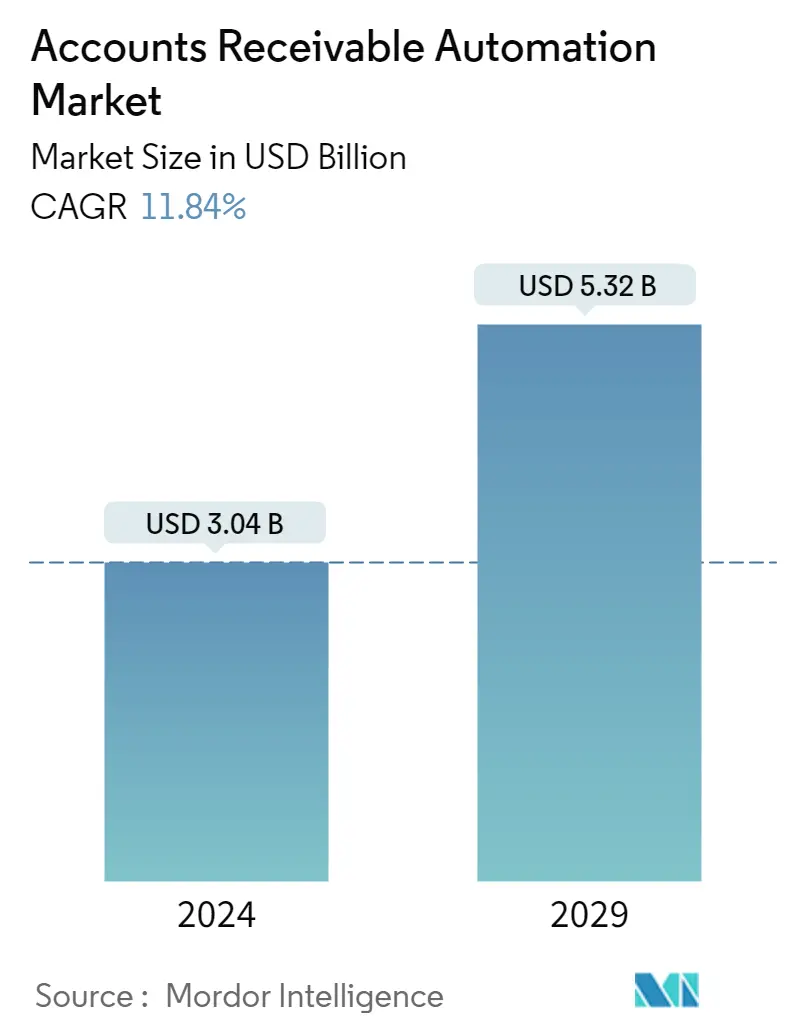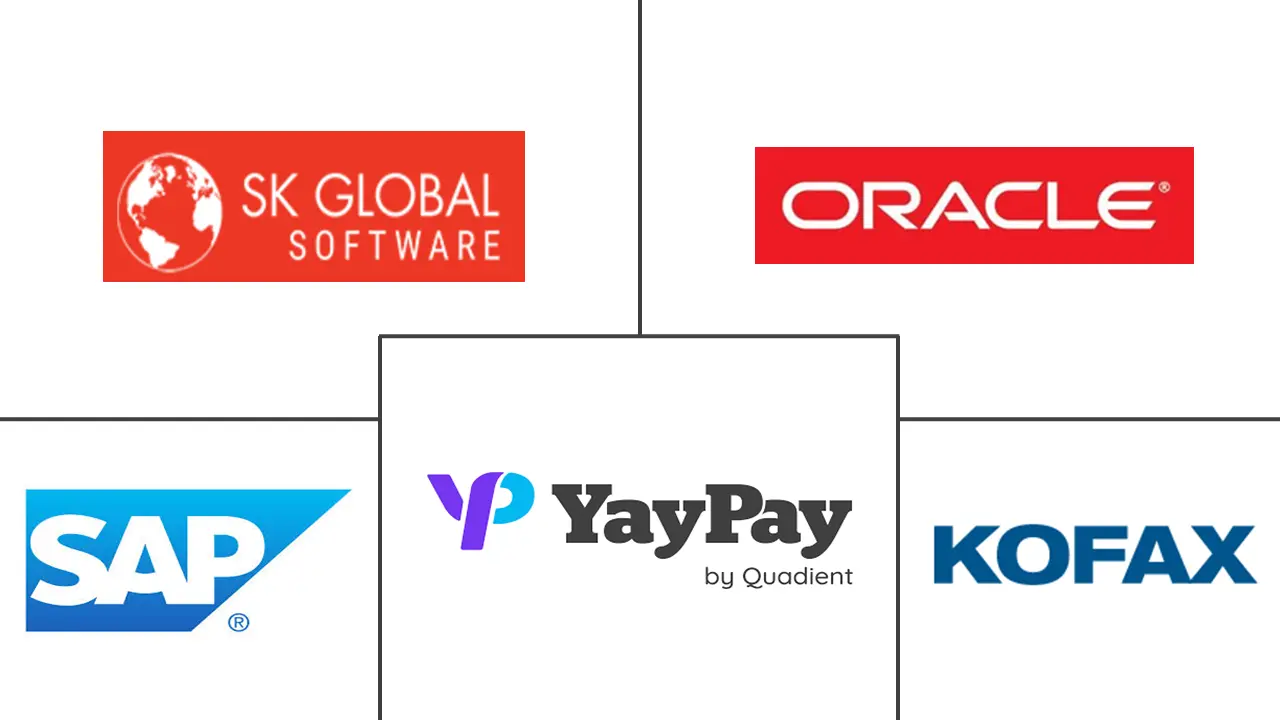Market Size of Accounts Receivable Automation Industry

| Study Period | 2019 - 2029 |
| Market Size (2024) | USD 3.04 Billion |
| Market Size (2029) | USD 5.32 Billion |
| CAGR (2024 - 2029) | 11.84 % |
| Fastest Growing Market | Asia-Pacific |
| Largest Market | North America |
Major Players
*Disclaimer: Major Players sorted in no particular order |
Need a report that reflects how COVID-19 has impacted this market and its growth?
AR Automation Market Analysis
The Accounts Receivable Automation Market size is estimated at USD 3.04 billion in 2024, and is expected to reach USD 5.32 billion by 2029, growing at a CAGR of 11.84% during the forecast period (2024-2029).
The accounts receivable automation process is becoming more necessary because it helps businesses to save money and time and improve efficiency.
- Automating account receivables operations enables businesses to have simple and accurate credit choices, corporate borrowing, liquidity management, corporate sales reporting, and sales commissions. Furthermore, an efficient receivables process better understands a company's present financial situation.
- Additionally, human and physical paper-based invoices present various problems to recipients who want to handle them promptly and efficiently. According to PYMNTS, processing such invoices costs firms between USD 16 and USD 22 per invoice. Furthermore, 72.4% and 43.8% of these are distributed using postal and fax machines, respectively. These are some of the most common loopholes in traditional accounts receivable, creating a demand for automating the accounts receivable process among businesses.
- Digitizing invoices helps avoid manipulation errors and reduces employees' time performing repetitive tasks, such as filing/scanning invoices, leaving extra time that could be utilized for more critical organizational tasks. Digitizing the AR process further helps reduce printing costs and makes employees more profitable, driving the global market globally.
- Data security is a rising concern for a significant share of the stakeholders in the accounting field. With the increasing number of identity frauds and cybercrimes, businesses are increasingly becoming cautious in adopting digital solutions, which is a major challenge for the broad acceptance of accounts receivable automation.
- Automation of accounts receivable solves the problems caused by the pandemic. To develop a business while the world economy recovers from the epidemic, COVID-19 has necessitated lowering overhead costs, collecting payments, and increasing sales. For business executives across all industries, enhancing organizational resilience to prepare for future disruption and improving working capital management has never been more important. Large corporations and small and medium-sized businesses that have increased their accounts receivable automation appear to have better adjusted to post-pandemic dynamics. Businesses from various industries are transitioning to automated cloud-based accounts receivable services. Switching to this automated platform has cut the cost of running an accounts receivable department.
